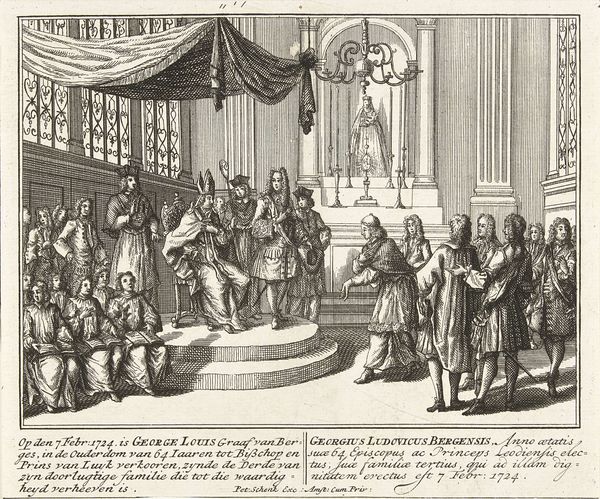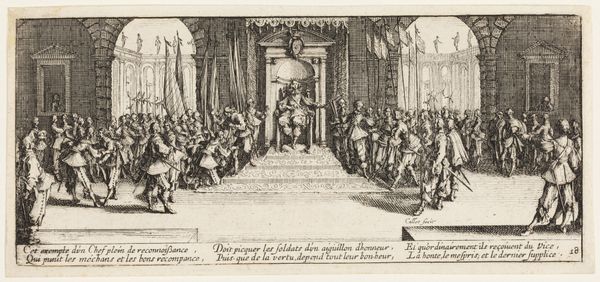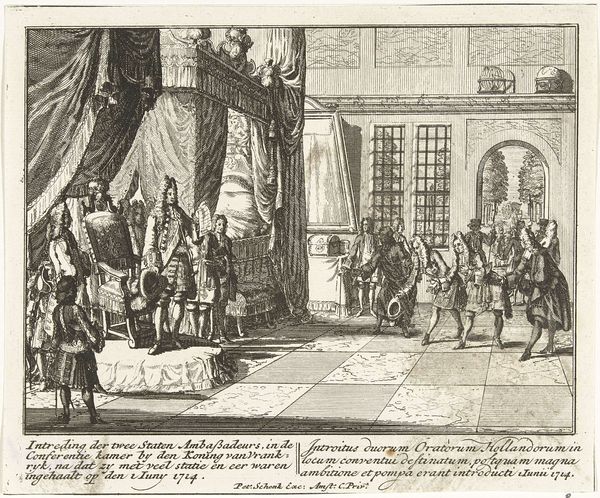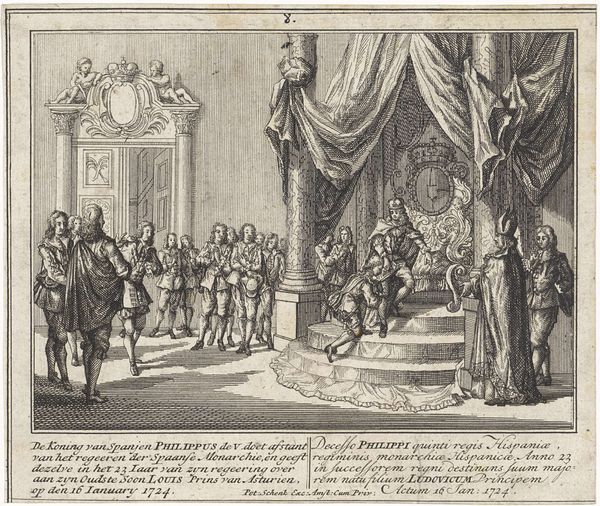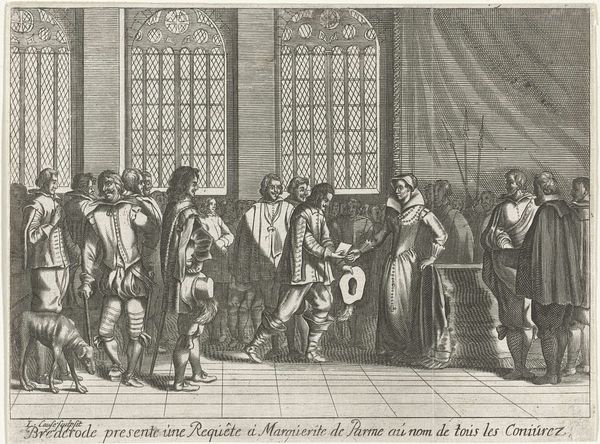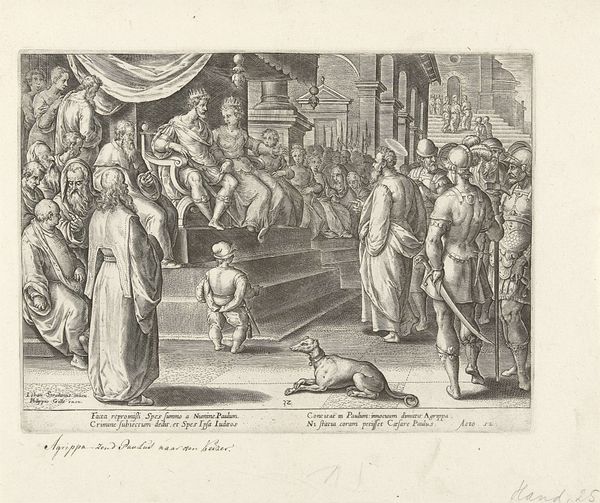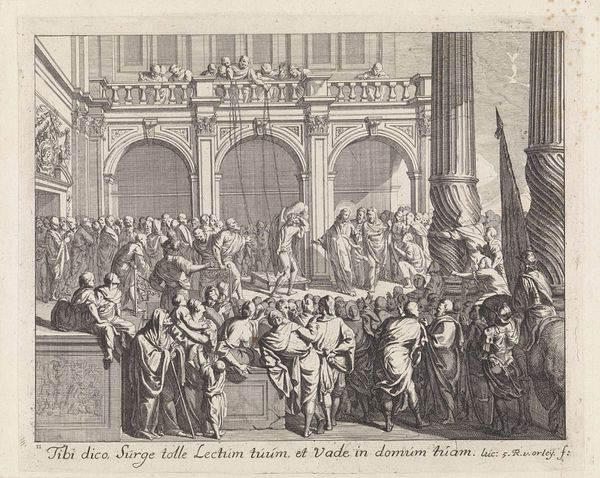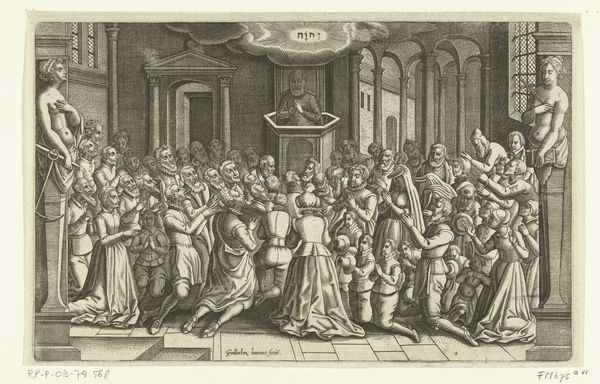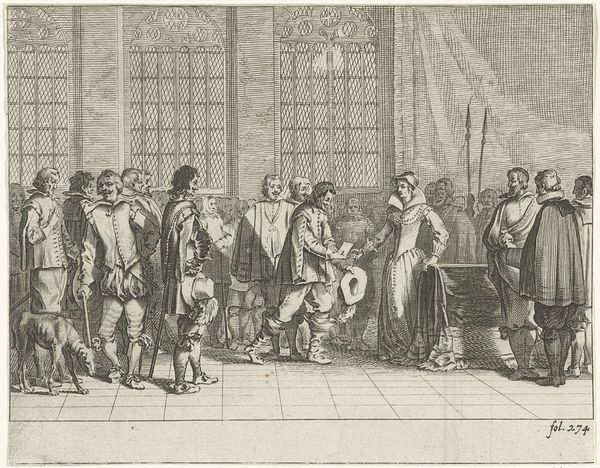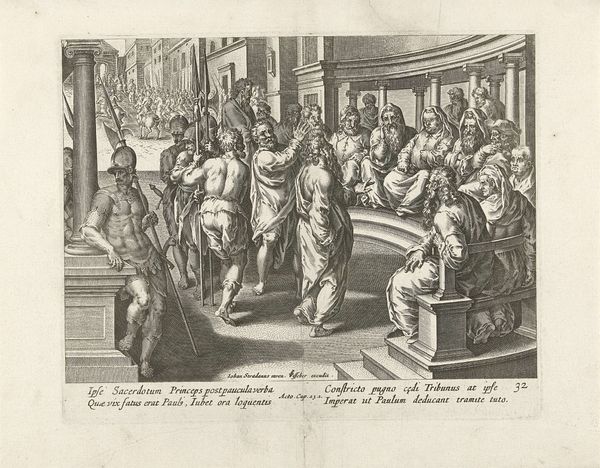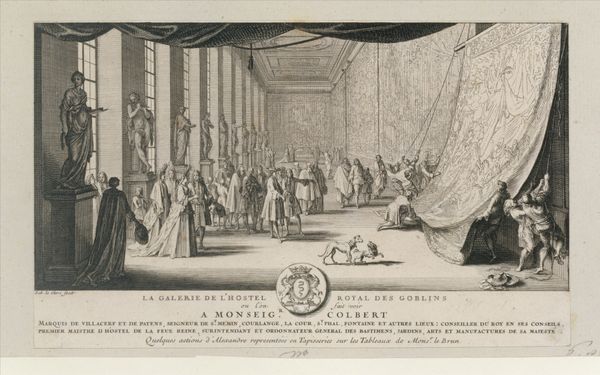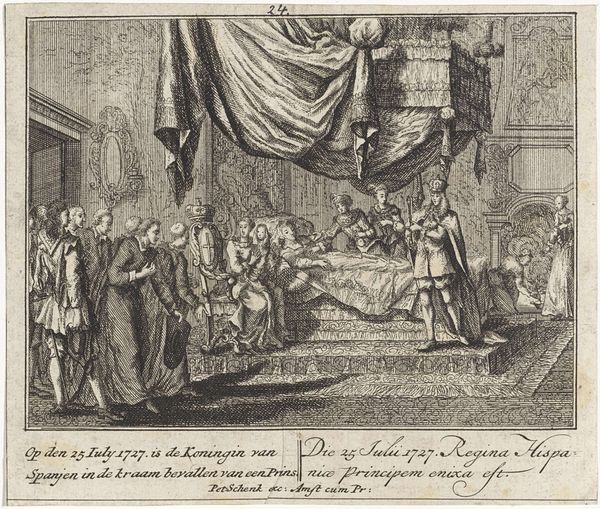
Koning Romulus en zijn twaalf lijfwachten en honderd senatoren 1572 - 1573
0:00
0:00
print, intaglio, engraving
#
narrative-art
# print
#
intaglio
#
classical-realism
#
mannerism
#
figuration
#
form
#
line
#
history-painting
#
academic-art
#
engraving
Dimensions: height 138 mm, width 181 mm
Copyright: Rijks Museum: Open Domain
Giovanni Battista Fontana etched "Koning Romulus" sometime in the 16th century, presenting us with a vision of Romulus establishing the Roman senate. The figure of Romulus, adorned with a crown and seated on a throne, presents a scene of power and authority. Note the spears held by his guards, a symbol that stretches back to ancient warrior cultures. The act of bearing arms has always signified readiness, strength, and the defense of social order. We see similar motifs in ancient Egyptian art, where pharaohs are depicted with scepters and surrounded by armed guards. Consider, too, the gesture of Romulus pointing, an act directing his will onto others. This simple gesture reappears across centuries; each time it carries the weight of command. The act of pointing, as a symbol, engages with our subconscious understanding of dominance and intent. The enduring power of these symbols lies in their ability to evoke deep-seated emotional responses, reminding us of the perennial human drama of power. They resurface, evolve, and take on new meanings, echoing through the corridors of time.
Comments
No comments
Be the first to comment and join the conversation on the ultimate creative platform.
